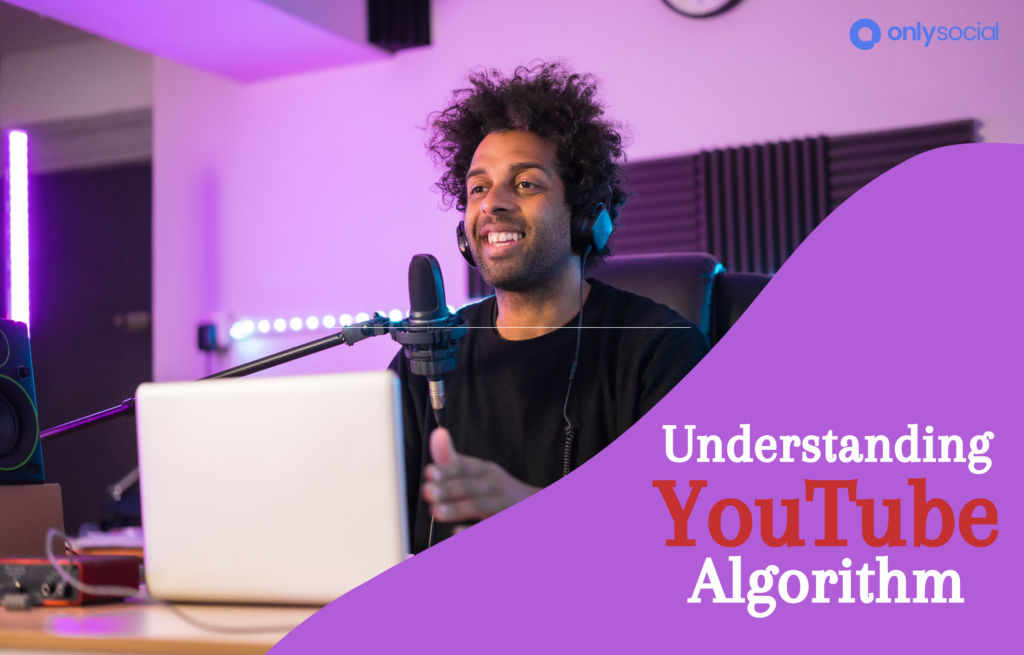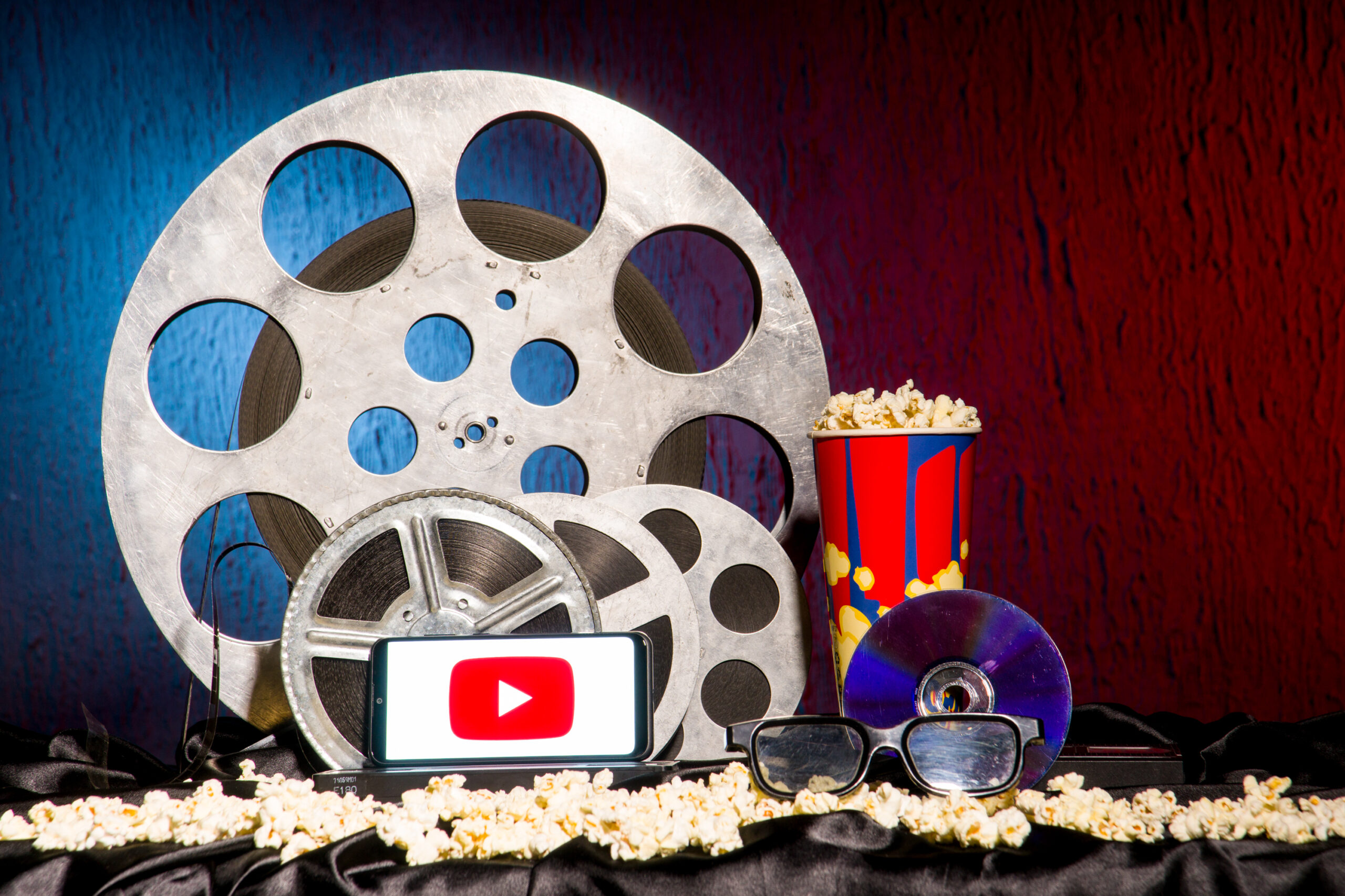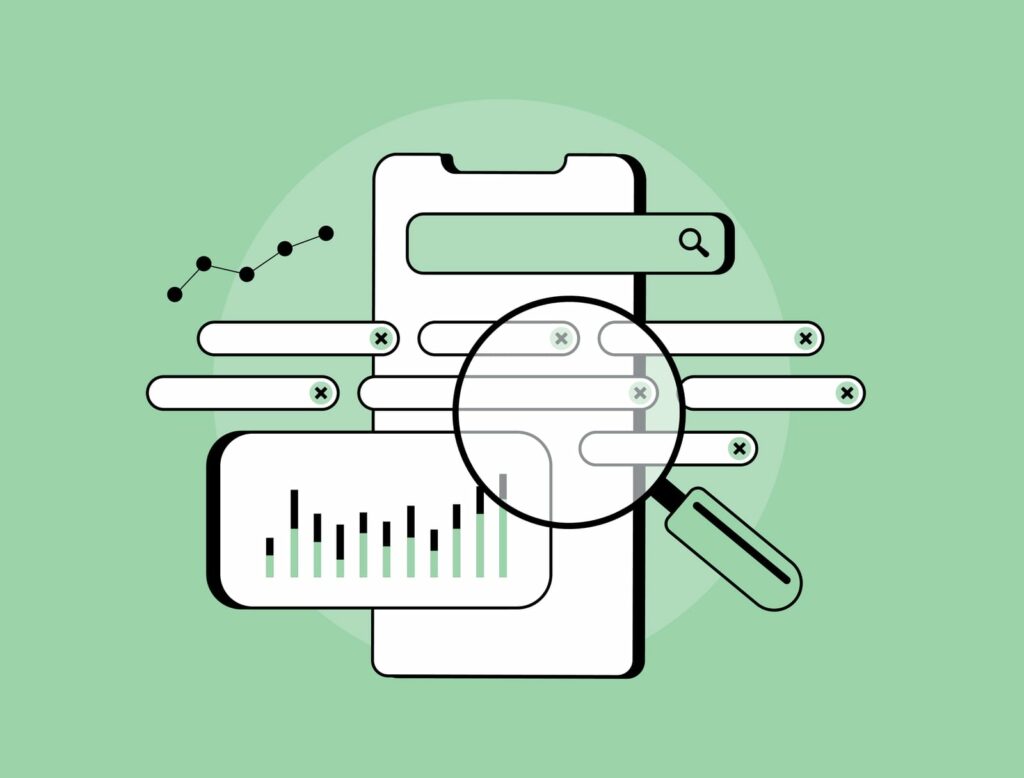Understanding How the YouTube Algorithm Works – A Complete Guide

Curious about how the YouTube algorithm works and how to get your videos in front of more eyes? You’re not alone!
With YouTube’s recommendation engine driving a whopping 70% of what people watch, understanding this powerful algorithm is the key to increasing your video views.
But what exactly is behind this mysterious system? How does it decide what content to serve up, and how can you use that knowledge to your advantage?
In this guide, we’ll break down everything you need to know about how the YouTube algorithm works, how it ranks content, and how you can work with it to boost your video visibility.
Table of Contents
- 1 The YouTube Algorithm: A Brief History
- 2 How Does the YouTube Algorithm Work in 2025?
- 3 Pro Tips to Help You Improve Your Organic Reach on YouTube
- 3.1 #1: Master Your Keywords for Maximum Discovery
- 3.2 #2: Make Your Thumbnails Impossible to Ignore
- 3.3 #3: Keep Viewers Hooked from Start to Finish
- 3.4 #4: Attract Views from Beyond YouTube
- 3.5 #5: Engage With Your Audience Like a Pro
- 3.6 #6: Stay in the Loop with Conversations
- 3.7 #7: Don’t Fall Into the Clickbait Trap
- 3.8 #8: Keep Experimenting and Evolving
- 3.9 #9: Post at the Best Times for Your Audience
- 3.10 #10: Make Good Videos, Not Just Long Ones
- 3.11 #11: Get on the Shorts Train
- 3.12 #12: Make Your Videos Accessible to Everyone
- 3.13 #13: Keep an Eye on Your Best Competitors
- 3.14 #14: Analyze Your Performance and Adjust
- 4 Final Note
The YouTube Algorithm: A Brief History
Before we go into how the YouTube algorithm works today, let’s take a quick journey through its evolution.
Over the years, YouTube has made significant changes to its algorithm, shaping how content is recommended and consumed on the platform.
2005-2011: Optimizing for Clicks & Views
When YouTube launched in 2005, the algorithm was pretty straightforward – it favored videos that attracted the most views and clicks.
In the early days, it was all about what caught people’s attention. But, as you can guess, this led to the rise of clickbait, with misleading titles and thumbnails tricking viewers into watching content that often disappointed them.
While it boosted views, it hurt the user experience as people felt frustrated by videos that didn’t deliver on their promises.
2012: Optimizing for Watch Time
In 2012, YouTube switched gears to prioritize watch time – the total time viewers spent watching videos.
The idea was that if people were watching content for longer, it must be valuable and engaging. This shift had a major impact on the type of content creators produced.
Short, snappy videos gave way to longer, more in-depth content, as creators adjusted to keep viewers engaged for extended periods.
YouTube’s message was clear: focus on creating content your audience genuinely wants to watch, and the algorithm will reward you.
2015-2016: Optimizing for Satisfaction
By 2015, YouTube realized that watch time alone wasn’t enough. So, it introduced user feedback surveys and began prioritizing viewer satisfaction.
Metrics like shares, likes, dislikes, and the infamous “not interested” button started playing a bigger role in determining which videos were recommended.
YouTube even published a whitepaper explaining how its recommendation system had evolved to become more personal, finding the right video for each individual viewer rather than simply promoting the most popular content.
2016-Present: Dangerous Content, Demonetization, and Brand Safety
As YouTube grew, so did concerns about the type of content being promoted. Harmful misinformation and borderline content became major issues, forcing YouTube to make algorithmic adjustments to reduce the spread of such content.
In early 2019, YouTube announced changes that decreased the consumption of borderline content by 70%.
At the same time, creators began to fear that they might accidentally violate community guidelines and face demonetization or strikes, while brands grew cautious about being associated with inappropriate content.
YouTube’s algorithm continues to be a subject of debate, especially as governments and researchers question its societal impact.
Although strides have been made to reduce harmful content, issues persist, as seen during events like the 2025 Finnish elections, where alt-right content was still being promoted.
How Does the YouTube Algorithm Work in 2025?
Now that we’ve covered the history of YouTube’s algorithm, let’s move into how it operates in 2025.
The YouTube algorithm is smarter, more tailored, and hyper-focused on delivering content that’s uniquely relevant to each individual user.
But how does it manage to do that?
In 2025, the YouTube algorithm tailors recommendations based on a combination of user behavior, video performance, and contextual factors.
Essentially, it’s all about what you, the viewer, are likely to enjoy based on what you’ve interacted with before.
Here’s how the magic happens:
- What Have You Watched or Interacted With in the Past?
If you’ve ever liked or commented on a video – or even just watched it – you’re signaling to YouTube that you found that content valuable.
So, if you once got hooked on a 40-minute documentary about obscure historical flags, expect more flag-related content to come your way!
This means that watch history and engagement play a crucial role in shaping your future recommendations.
- What Topics or Channels Do You Typically Follow?
The algorithm also factors in your subscriptions and the types of content you’ve engaged with over time.
For example, if you frequently watch content from food channels, YouTube will assume you’re into cooking and continue recommending similar videos.
Essentially, your content preferences guide the algorithm in choosing what you’ll see next.
- What Videos Are Usually Watched Together?
YouTube also takes into account what other videos are typically viewed after the one you’ve just watched.
If people who watch “How to change a monster truck tire” also tend to watch “Monster truck repair 101,” you’ll likely be recommended that follow-up video.
This video association helps YouTube suggest a logical flow of content to keep you hooked.
- How Does YouTube Judge Video Quality?
While YouTube can’t evaluate the content of your video directly (whether it’s about cute cats or fixing cars), it does measure viewer response.
The platform wants to ensure that recommended videos meet a high standard of quality for its users. Here’s what the algorithm looks at:
- Did viewers actually watch the video? If a video is recommended but most users ignore it, that’s a signal the algorithm considers.
- How long did people watch it? Both the total view duration and the percentage of the video watched influence rankings.
- Did they like it? Engagement metrics like likes, dislikes, and comments – as well as post-watch survey results – tell YouTube whether the video resonated with its audience.
- What’s Your Regional Context?
The algorithm also considers your regional and contextual details like time of day and language preference.
This ensures that you’re being recommended content that’s relevant to your area and your schedule, adding another layer of personalization.
In short, the YouTube algorithm in 2025 doesn’t focus on the content itself, but on you, the viewer.
It’s all about finding what you’ll enjoy based on your behaviors, preferences, and interactions, making it a uniquely personal experience each time you log in.
If you’re a content creator, the key to getting noticed isn’t trying to “hack” the algorithm but rather focusing on creating videos that your audience will genuinely enjoy and engage with.
With that being said, let’s show you some useful tips that can help you improve your reach on YouTube.
Pro Tips to Help You Improve Your Organic Reach on YouTube
If you’re ready to get your content in front of more eyes and take your YouTube channel to the next level, it’s time to focus on strategies that boost your organic reach.
Here are some powerful tips to help you maximize visibility and grow your audience.
#1: Master Your Keywords for Maximum Discovery
Just like SEO is crucial for blogs, keyword research is essential for getting your YouTube videos discovered.
Understanding what your audience is searching for allows you to create videos that show up in the right search results. It’s not just about uploading great content – it’s about making sure people can find that content.
Here’s how to do effective keyword research:
- Use YouTube’s search bar: Start typing related topics in the search bar and see what auto-suggestions come up. These suggestions are what people are actively searching for.
- Explore competitor keywords: Look at successful videos in your niche and see what keywords they are targeting.
- Use tools like TubeBuddy or VidIQ: These tools can give you insights into high-performing keywords.
- Focus on long-tail keywords: Instead of just “dog training,” target more specific phrases like “how to train a puppy to sit.”
#2: Make Your Thumbnails Impossible to Ignore
Your video thumbnail is the first thing viewers notice, and it can make or break whether they click on your video.
A well-designed, click-worthy thumbnail should grab attention and give viewers a glimpse of what they’ll get if they click.
Here are some tips for creating irresistible thumbnails:
- Keep it simple: Use bold images and minimal text. Don’t overwhelm viewers with too much information.
- Use contrasting colors: Make your text and visuals pop by using high-contrast colors.
- Highlight emotion: Whether it’s surprise, excitement, or humor, showing an emotion can create curiosity.
- Stay consistent: Use a similar style for your thumbnails to establish a recognizable brand for your channel.
#3: Keep Viewers Hooked from Start to Finish
YouTube’s algorithm loves videos that keep people watching. The longer viewers stay on your video – and your channel overall – the better it will perform.
Your goal is to not only keep people watching one video but to encourage them to binge-watch more of your content. So, focus on:
- Creating strong intros: Hook viewers within the first 10 seconds with a clear statement about what value they’ll get from the video.
- Using engaging visuals: Switch up your shots, use text overlays, and include B-roll footage to keep things visually interesting.
- Tease future content: Let viewers know there’s more exciting content to come on your channel.
- Use end screens: Always link to other videos in your end screens to keep viewers moving through your content.
#4: Attract Views from Beyond YouTube
Why wait for YouTube’s algorithm to discover your videos when you can bring the audience to them? Expanding your video reach beyond the platform can help you generate more views, build a bigger audience, and boost your organic reach.
Share your videos on Instagram, Twitter, Facebook, and LinkedIn. If you have a website or blog, embed your videos in relevant articles to drive traffic from search engines.
You should also consider reaching out to influencers in your niche to promote your content to their audience.
#5: Engage With Your Audience Like a Pro
YouTube isn’t just a platform for broadcasting – it’s a space for building a community.
Engaging with your audience is crucial for keeping them loyal and ensuring that your content gets shared. Responding to comments, asking questions, and creating conversations around your videos help build stronger connections with your viewers.
#6: Stay in the Loop with Conversations
Keeping an eye on what’s trending and staying updated with current discussions is essential. Whether it’s industry news or viral moments, your content should stay relevant to what people are talking about.
This doesn’t mean hopping on every trend but making sure your videos align with ongoing conversations.
To stay ahead:
- Use trending hashtags to find topics that people are buzzing about.
- Check your comments regularly to stay informed about what your audience is interested in.
- Monitor competitors to see how they’re engaging with current trends.
#7: Don’t Fall Into the Clickbait Trap
Sure, clickbait might get people to click on your video once, but it can destroy your credibility over time. Instead of luring viewers with misleading titles or thumbnails, aim for curiosity-driven or problem-solving content.
Your video should deliver on the promise made in your thumbnail and title, building trust and ensuring viewers return for more.
#8: Keep Experimenting and Evolving
YouTube’s landscape is always changing, and so should your content strategy. Experiment with new video formats, try different types of content, and don’t be afraid to evolve as a creator.
Regularly check your YouTube analytics to see what’s working and what’s not. You’ll only get better by trying new things and adapting based on feedback and performance.
#9: Post at the Best Times for Your Audience
Timing is everything. Posting at the right time increases the chances of your video being seen by your target audience.
But how do you figure out the best time? Check your YouTube analytics for data on when your viewers are most active.
Additionally, scheduling your videos ensures consistency, which is key to building your audience. This is where a tool like OnlySocial comes in handy.
With OnlySocial, you can easily schedule your YouTube posts to go live at peak times, allowing you to stay consistent without manually uploading videos every time.
To know how to schedule your videos on YouTube, you can check out this comprehensive post.
#10: Make Good Videos, Not Just Long Ones
It’s tempting to think that longer videos automatically mean more watch time, but the real secret is in creating quality content that keeps viewers engaged from start to finish.
A long video will only work if it’s well-paced and packed with value. Focus on delivering what your audience wants while keeping their attention throughout.
So, keep the pacing tight. Avoid filler content and keep things moving. Also, always offer something valuable – whether that’s knowledge, humor, or a story.
#11: Get on the Shorts Train
YouTube Shorts are booming, and if you’re not using them yet, you’re missing out on a huge opportunity to attract new viewers.
With their short, snackable format, Shorts can help you reach a wider audience, especially if you’re targeting younger viewers.
The algorithm loves Shorts, and they’re a fantastic way to introduce your content to people who might not find it otherwise.
Tip: Create engaging, bite-sized content that hooks viewers within the first few seconds to increase visibility.
#12: Make Your Videos Accessible to Everyone
Inclusivity matters. Ensuring your videos are accessible helps you reach a broader audience, including those with hearing or visual impairments.
So, add captions to your videos so they can be enjoyed without sound, and use clear, descriptive language in your content for those relying on audio alone.
#13: Keep an Eye on Your Best Competitors
Your competitors can teach you a lot about what works and what doesn’t. Study their most successful videos to identify trends, strategies, or content ideas you can incorporate into your own channel.
Whether it’s their video format, engagement techniques, or even their thumbnail design, there’s always something to learn.
Take time to analyze their top-performing videos to see how you can adapt similar strategies for your audience.
#14: Analyze Your Performance and Adjust
Finally, analyzing your video performance is key to long-term success. Dive into your YouTube analytics regularly to see which videos perform best, which titles generate the most clicks, and what type of content keeps viewers hooked.
Then, make adjustments based on those insights to improve your future videos.
By focusing on both quality and strategy, you’ll be well on your way to growing your YouTube channel and increasing your organic reach!
Final Note
Understanding how to work with the YouTube algorithm is key to growing your channel and boosting your organic reach.
By following the tips we have provided above, you can consistently reach new viewers and build a loyal audience.
Don’t be afraid to experiment, stay up-to-date with trends like Shorts, and learn from both your own performance and your competitors. Put these tips into action, and watch your YouTube presence flourish.




